Intruder Prop Hackle
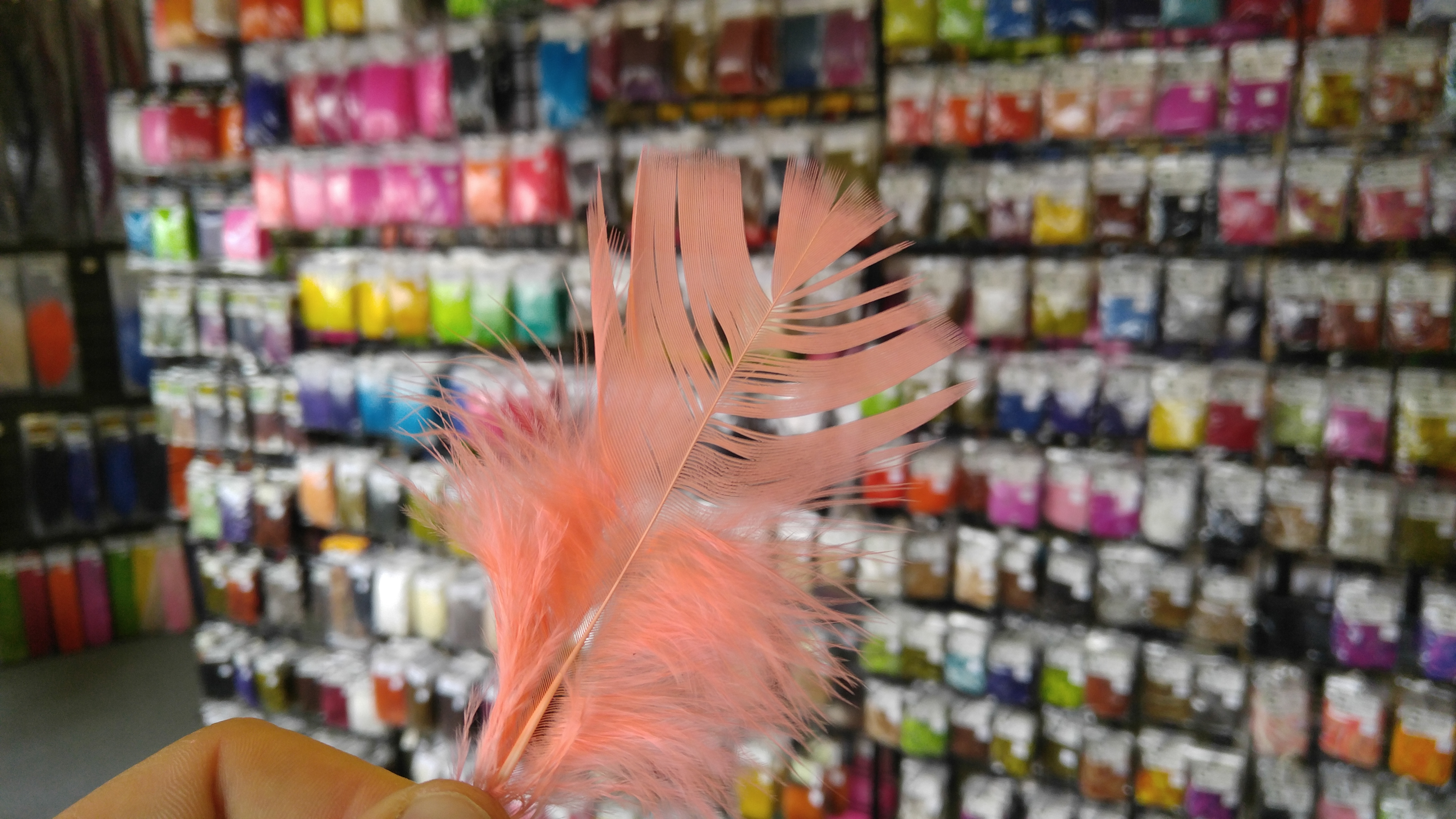
What exactly is “Intruder Prop Hackle?” We’ll it’s a hackle that “props-up” materials, giving you a larger shoulder.
A “shoulder” is basically just a bulky or compound collar, an integral part of the intruder, and the deliberately selected material used to give the shoulder it’s volume is the “prop.” Prop materials don’t allow a shoulder to “collapse” but rather hold shoulder mass when subject to river currents and tension. Simply put prop makes the fly appear bigger while maintaining the desired translucence.
Scroll to the bottom of the page for a short summary and swim tank videos.
A few simple questions while evaluating Intruder Prop Hackle
1.) Does it simplify the tying process? Intruders are known for their time consuming construction. To be very blunt, Intruder Prop Hackle is by far one of the quickest ways to build up a large silhouette fly, or what we so commonly call, an “Intruder”. If you want to tie a large intruder under 10 minutes then intruder prop hackle might be just what your looking for!
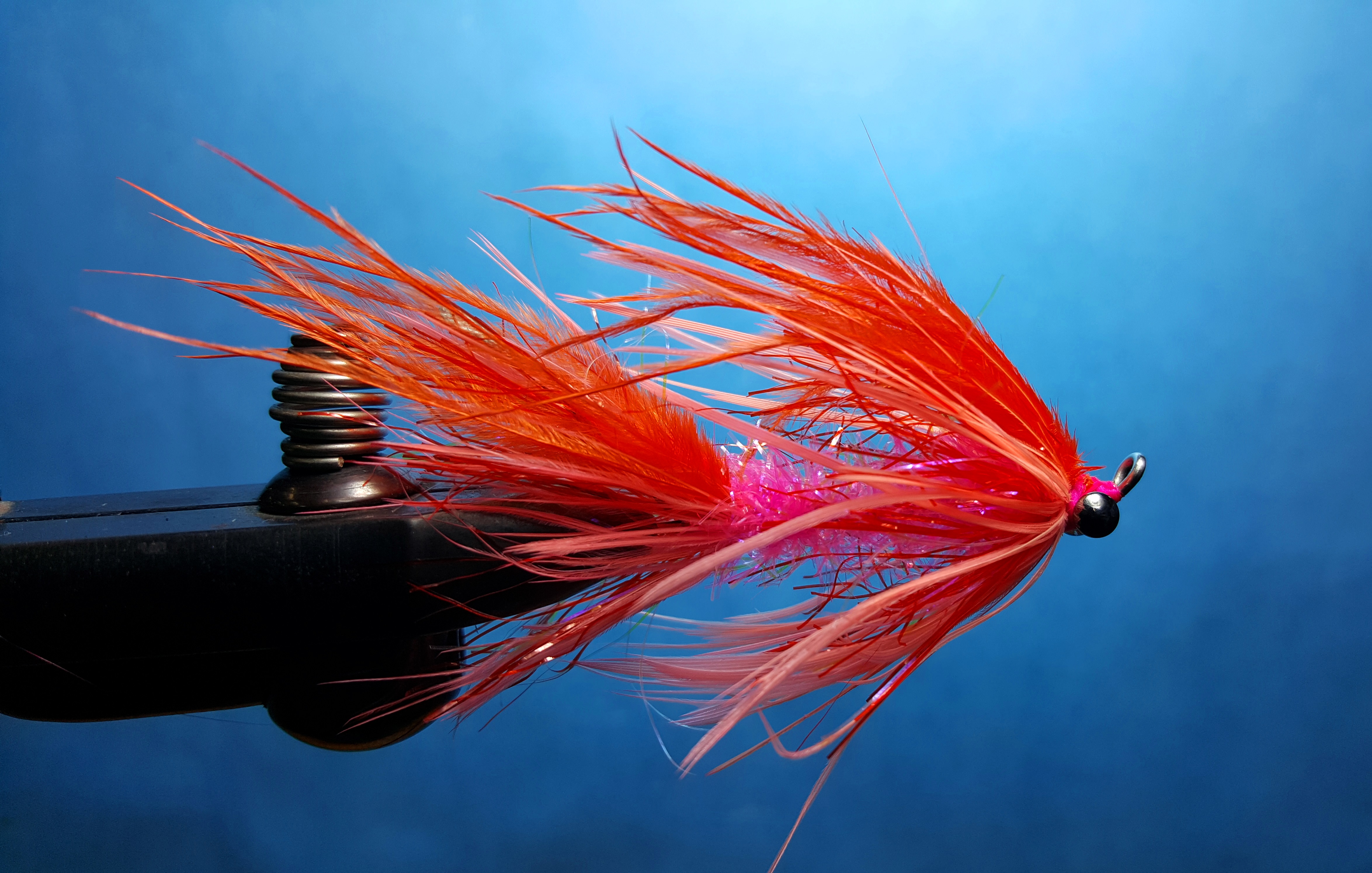
Quick and stupid easy for the under 10 minute intruder. Shrimp pink prop hackle used in this fly.
2.) How to use it? After removing the fluff from the bottom of the feather simply tie it in either by the base or the tip of your feather, then wrap the hackle to achieve an upright leggy shoulder. Pretty easy. You can also strip one side of the feather for a sparser look when wrapped as a collar or used as a spey hackle.
3.) Cast-ability? This leggy material has less water retention than shoulders built either out of dense composite loops, densely spun Arctic Fox, EP brush, and other similar substances. Less water retention allows the angler to easily turn over larger flies. These larger, easy-to-cast flies are a common selection for any angler fishing less than ideal conditions (like this winter on the OP) because a bigger fly means a more visible fly, and a more visible fly means more grabs .
4.) Aesthetic appeal? Notably the translucent properties. The appeal of translucency is light refraction within the body of the fly, which allows more of the intended color to resonate within its large silhouette. To simplify; a solid or densely packed fly, no matter how UV enhanced it may be, will appear black or darkened from a fish’s view, whereas a true translucent fly (pink for this example) will remain pink from all points of view and angles of light. Intruder Prop Hackle does the job with less material mass. Another great property of this material is the movement the fibers have in the water. That’s why turkey flats and turkey tails make good spey hackle. They work well for the shrimpy or squidy tentacles, legs and feelers on any number of flies.
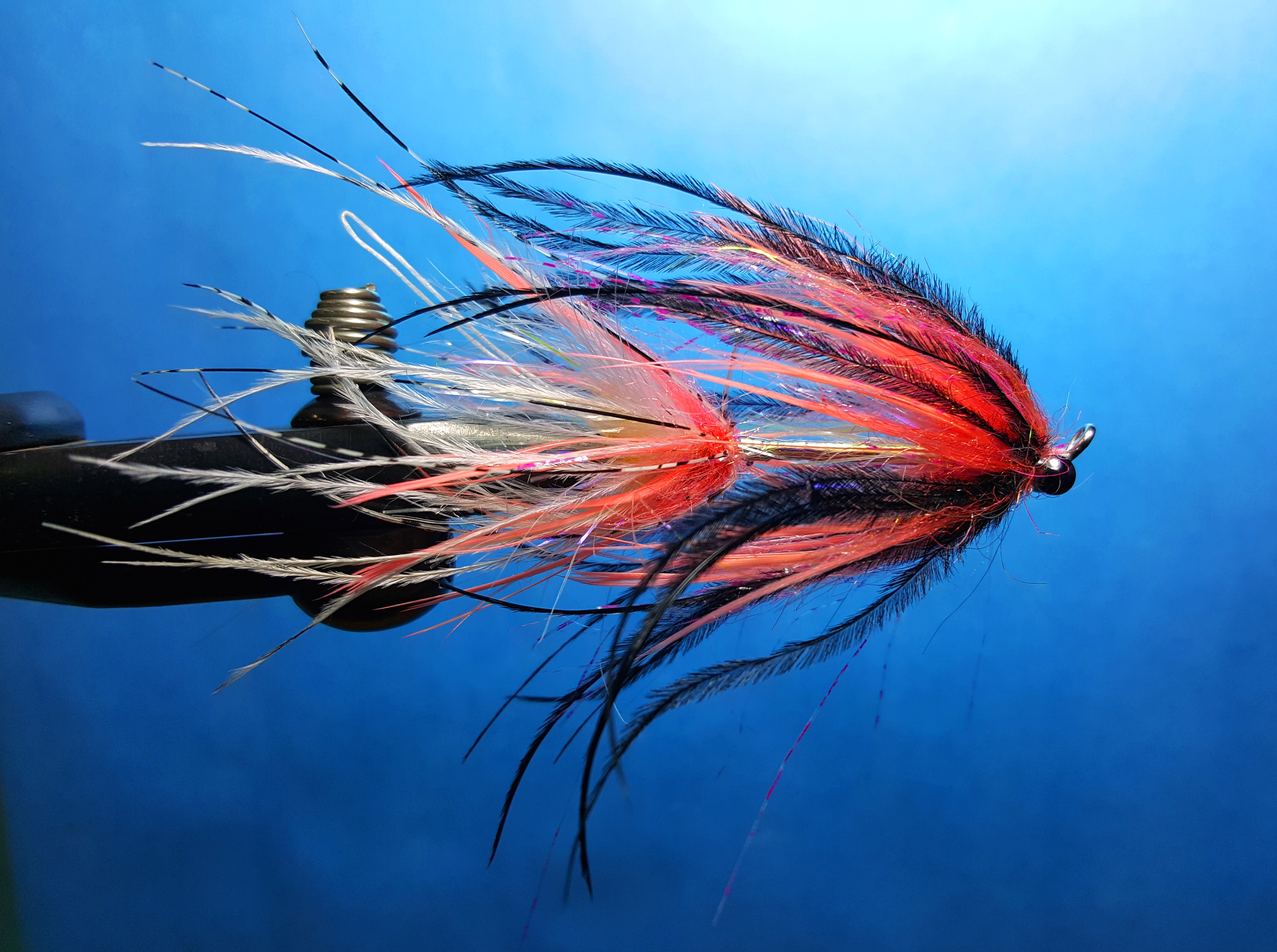
Kingtruder. Prop hackle helps to diminish casting weight thus allowing angler to cast bigger flies. Shrimp pink intruder prop hackle holds the shape of this fly, even when wet.
5.) Blending? No reason to give up composite loops. To gain a mean or stout shoulder, adding to, blending, or building up of a shoulder out of multiple materials allows for creative and effective designs. Due to it’s easy handling this prop hackle may blend nicely with your added accessories such as Krystal hackle, or spun arctic fox or Senyos Predator Wrap.
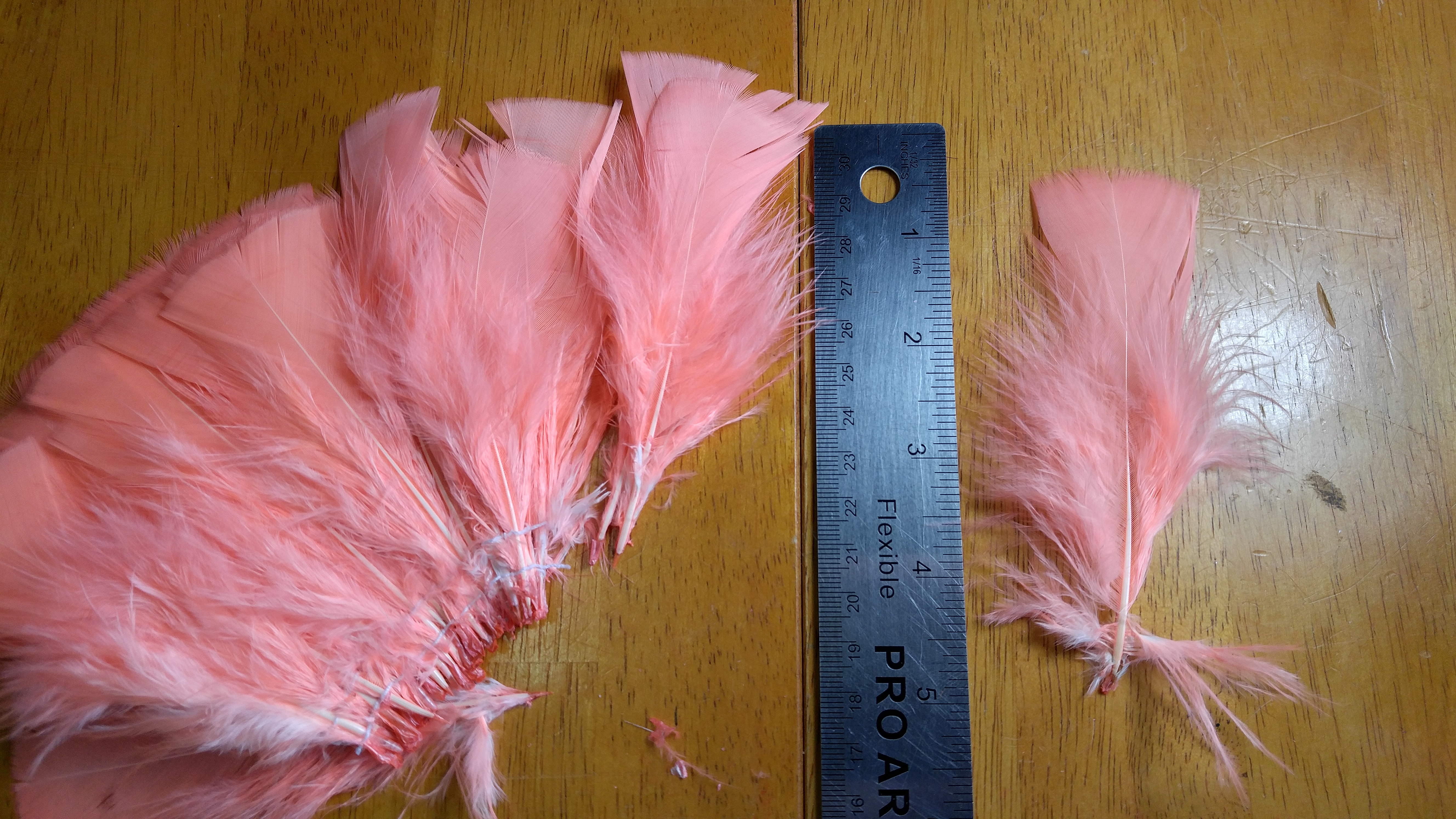
Most stems are 4 to 5 inches in length with working portion (at the top) 1 to 2 inches in length
6.) Characteristics? Most feathers are composed of long stout fibers, with the fibers ranging from 1/2 – 2 inches in length measured from stem to fiber tip. Really it’s just a larger, stouter fiber closely resembling that of stiffened schlappen. Where schlappen will often collapse under current pressure, this prop hackle will not.
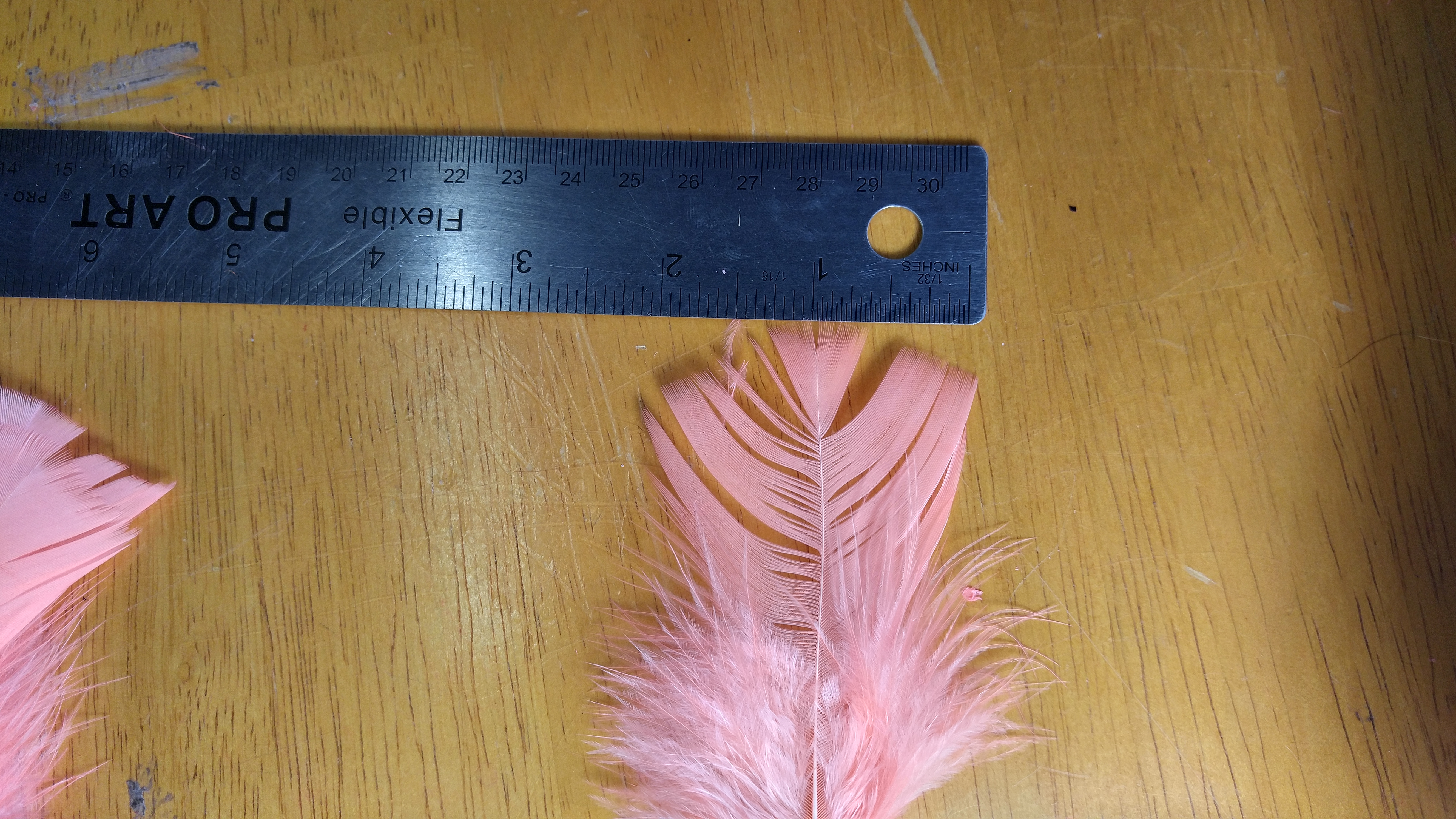
1″ to 1.5″ fiber lengths measuring from tip of fiber to stem. Shrimp pink intruder prop hackle.
7.) Uses? Typical feather no more than 2-4 wraps on standard gauge intruder shank. – Supporting shoulder, or “prop” for material such as ostrich, rhea, arctic fox, temple dog, or any other junk you can slap onto a fly. Collars, or more specifically large collars as a substitute for schlappen, guinea etc. You can also double up the two feathers and wrap pinched together. This is a doubled up quick and easy hackle prop.
8.) Versatility? For summer time or low water proportions you may crush or mat down the fibers and crease the base of the fibers at the stem either by simply pinching aggressively or brushing the ever living crap out of it. This can release these grippy fibers from their rigid structure, they become more relaxed and ultimately subject to more movement from the current. This especially helps when making hackle for spey flies. We’ve have yet to tie trout streamers with this Intruder Prop Hackle but we’re brainstorming a few ideas for larger sculpins and big ugly streamers for those aggressive big boys.
9.) Summary: Intruder Prop Hackle does the job of “propping” for less material mass, weight and material variety. It hits hard on the quick and easy for the under 10min intruder challenge. Available at Waters West in a multitude of colors.
Intruder Prop hackle holds large shoulders such as this king intruder. And it allows the material to swim freely.
Tied in under 10 minutes. Intruder prop hackle can do the job for less.
